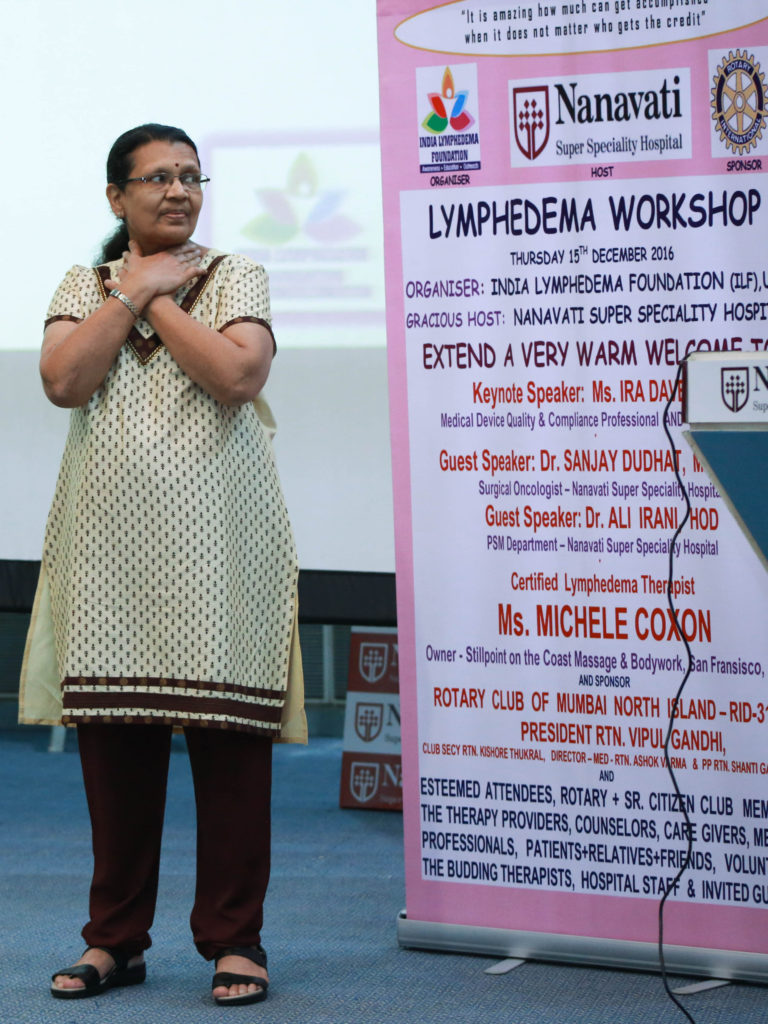Symptoms & Treatment Options
Early Signs & Symptoms may include:
- Swelling of affected body part (e.g. limbs)
- Discomfort including pain, heaviness or tightness in the affected areas
- Recurring infection
- Skin complications
Patients often suffer from long-term physical, psychological, and social problems.
More Severe Complications may include :
- Infections (e.g. cellulitis, lymphangitis, erysipelas)
- Lymphangiosarcoma (rare form of soft tissue cancer resulting from extreme cases of unmanaged lymphedema).
- Loss of function due to swelling and structural changes
- Pain exacerbated by nerve-compression (e.g. from fibrosis or increased accumulation of lymph fluids)
- Deep Vein Thrombosis (e.g. due to increased fibrosis)
- Skin complications
When do I visit my Doctor?
If you notice persistent swelling in your arm or leg, consult with your Doctor.
Precautions and Risk Reduction Recommendations:
- Schedule regular medical check-ups with your Doctor and discuss any changes to your skin condition, increase in size and weight, changes to your sensations and reduction in general flexibility.
- Make use of correct-size of clothing and compression garments. Tight clothing, jewelry or garments can cause constriction and causes lymph flow restriction. Blood pressure monitor used on affected arm may cause such effect, as well.
- Do not perform over-strenuous exercises.
- Maintain good skin-care routine. Click here for details regarding skin-care.
- Be aware that even a small injury to your affected body-part can be an entry point for infection. Report any infection immediately to your Doctor. Infection may manifest as rash, red blotches, swelling, increased heat, tenderness, or fever, etc.
- Avoid puncturing the skin (e.g. vaccinations, injections, blood drawing, and intravenous administration in the affected arm). Use first aid care if there is a break in the skin.
Be careful about insect bites that can lead to infection. - Do not take diuretics unless otherwise specified by your Physician.
Of Note: there are no medications to treat lymphedema. Diuretics have been found to be ineffective and may actually exacerbate the condition. - Avoid trauma and strenuous activities (e.g. excessive heat, repetitive movement, heavy lifting, strenuous exercises which would increase blood flow in the affected area and that may increase lymph fluid production).
- Ensure your weight is within the recommended weight range for your age and height. Obesity is a risk-factor for lymphedema.
- During air-travel, move around in the air-plane, maintain good hydration, gently exercise the affected or at-risk body part and consult with your Doctor for using compression garment.
Note: The need for specific precautions may vary from one person to the other. Precautions and risk reduction requirements should be discussed with your Doctor.

Important Lymphedema Management Tips:
- It is important to seek medical advice sooner than later. Early lymphedema can be better management.
- It is important to maintain an active life-style with light exercises that will encourage lymph fluid drainage, and good food habits. (Perform exercises upon consultation with your Doctor or other medical professional).
- Obtain help for manual lymphatic drainage massage
- Learn about self-lymphatic drainage techniques
- Use appropriate compression garments (no greater than 20-30 mm Hg)
- Frequently flex your affected limb
- Periodically elevate affected limb above your heart, especially, if your arm/leg starts to ache
- Use proper skin-care techniques
- In case of infection, patient must complete the regimen of the prescribed antibiotics
